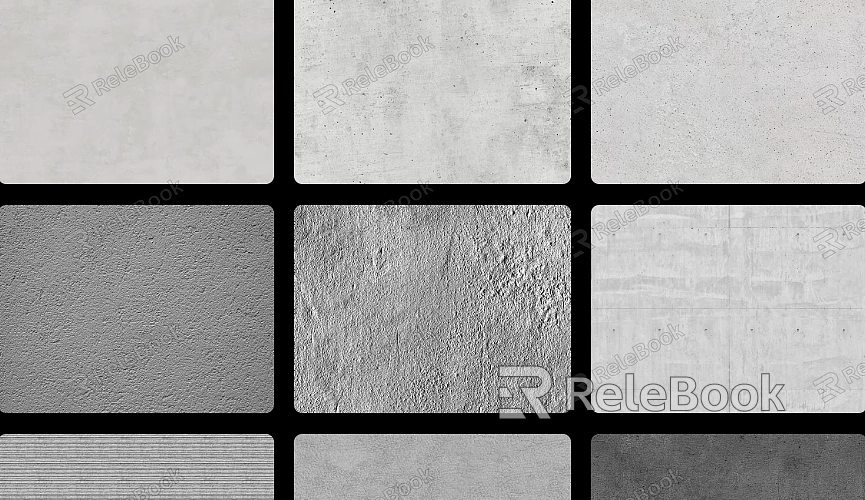Application of Grey Texture
Grey texture is widely used in 3D design and 3D scene rendering. This type of texture refers mainly to the color, patterns, and texture details of grey shades. It is employed to give a grey-toned appearance and texture to 3D model rendering, design projects, or scene rendering. Different types of grey textures can yield different rendering effects. Today, let's take a brief look at the ways grey texture is commonly used.

1. Choosing the Appropriate Grey Tone: In design, select a grey tone that aligns with the overall aesthetic, whether it's a cool-toned grey or a warm-toned grey, based on the scene requirements.
2. Preparing the 3D Scene: Set up your scene in Blender or other 3D modeling software, ensuring that scene elements harmonize with the grey texture.
3. Importing Grey Texture: Import the selected grey texture into the project, ensuring that image quality and resolution meet design standards.
4. Adjusting UV Mapping: Fine-tune UV mapping on scene elements to ensure accurate mapping of the grey texture to different parts.
5. Rendering and Lighting Effects: Adjust lighting effects in rendering settings and observe how the grey texture performs under different lighting conditions.
6. Adding Details and Depth: Use image editing software to add details to the grey texture, creating a more layered effect.
7. Real-time Preview: In 3D modeling software, preview the grey texture effects in real-time, making adjustments to ensure harmony with the overall scene.
Common Applications of Grey Texture Rendering Effects:
1. Modern Office Desktop: Use deep grey texture to design a simple yet sophisticated workspace for a modern office desktop, enhancing work efficiency.
2. Urban Architectural Facades: Apply light grey texture to create a clean, modern appearance for urban architectural facades, highlighting the city's modernity.
3. Stylish Home Sofas: Use grey leather texture to bring a comfortable and elegant look to stylish home sofas, aligning with home design trends.
4. Tech Product Casings: Employ metallic grey texture to design a sleek, tech-savvy appearance for tech product casings, attracting consumer attention.
5. Café Flooring: Use grey tile texture to design a simple and atmospheric effect for café flooring, elevating the overall space aesthetics.
6. Medical Instrument Surfaces: Apply deep grey metal texture to bring a sense of professionalism and technology to medical instrument surfaces, enhancing user trust.
7. Art Gallery Exhibition Walls: Use grey canvas texture to design a neutral background for art gallery exhibition walls, highlighting the uniqueness of artworks.
8. Outdoor Urban Squares: Utilize concrete grey texture to create a durable and easy-to-clean effect for the ground of outdoor urban squares, enhancing the overall city atmosphere.
We can use grey texture to simulate grey effects on surfaces of different materials, such as grey walls, floors, furniture, or other objects. This texture is often used to express neutral, minimalist, modern, and other design styles. If you need high-quality 3D textures and HDRI or 3D model downloads, you can find them on Relebook. Simply download and import the textures and 3D models directly into your project.

